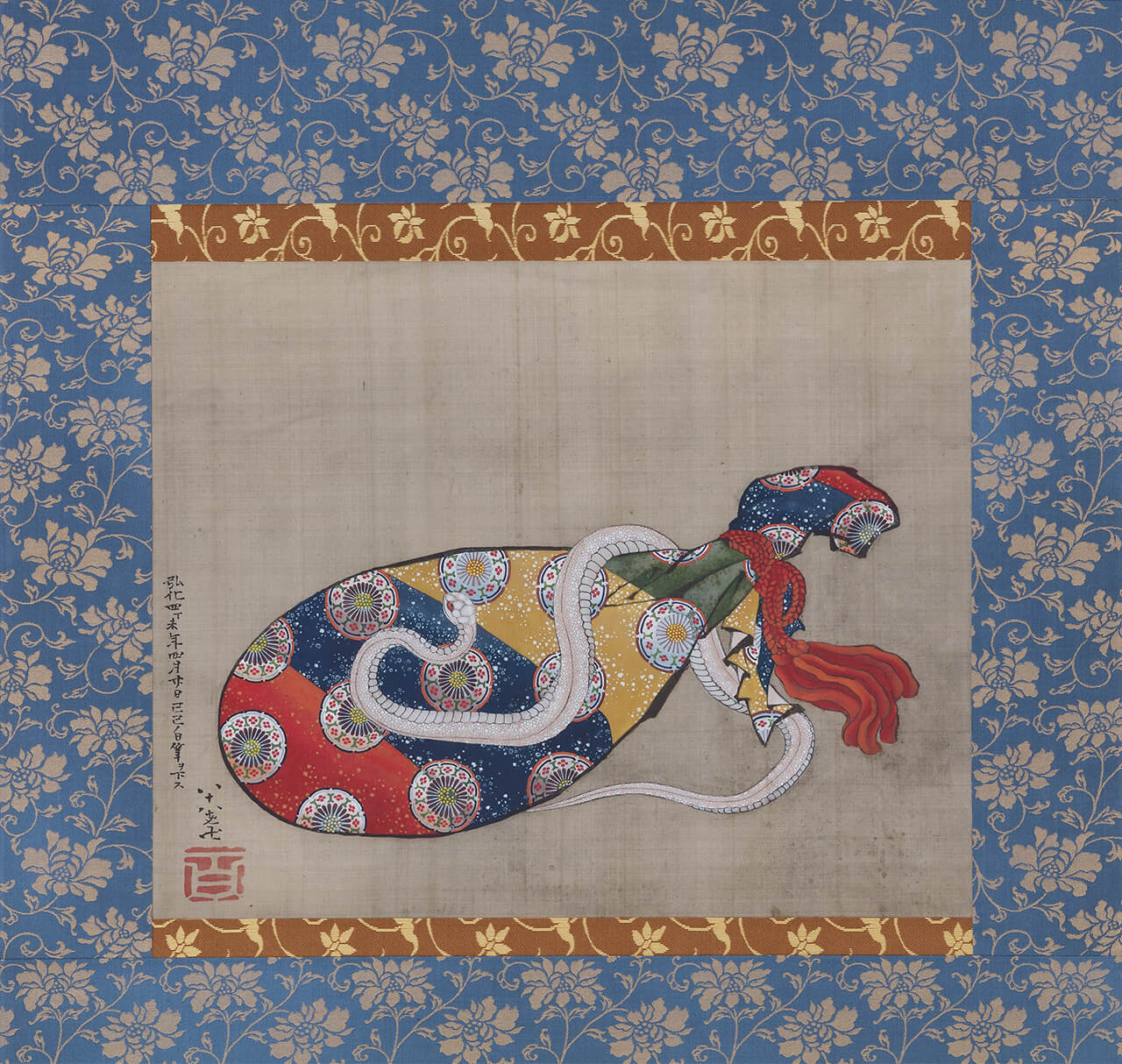The Lute and White Snake of Benten (Sarasvati)
Facsimiles of works in the collection of the Freer Gallery of Art, Smithsonian Institution, Washington, D.C. : Gift of Charles Lang Freer, F1904.134.
These images are based on the high resolution facsimile produced by the Tsuzuri Project. Unauthorized copying, duplication, or transfer of these images is strictly prohibited.
DATA
- Artist:
- Katsushika Hokusai
- Historical era:
- Edo (19th century)
- Material:
- printed on silk
- Medium:
- hanging scroll
- Theme:
- High Resolution Facsimile of Japanese Art Abroad
- Size:
- H36.1 × W44.0 cm
- Recipient:
- Sumida Ward
- depository:
- The Sumida Hokusai MuseumMAP
[Original]
- Current owner:
- The Freer Gallery of Art of the Smithsonian Institution
- Material:
- ink, color on silk
DESCRIPTION
A red-eyed white serpent coils around a vividly colored bag wrapping a biwa Japanese lute. The biwa is an asset of Benzaiten (a Japanese Buddhist deity; Sarasvatī in Sanskrit), who is known as one of the Seven Gods of Fortune, and the white serpent is one of her retainers. The signature given to the picture states that Hokusai produced it on a lucky day that comes every 60 days called tsuchi no tomi no hi (the day of the temple festival for Benzaiten), on April 20, 1847. Benzaiten is known as a deity that governs the fine arts as well as riches and good fortune. This work may be the result of Hokusai's eager wish to be an authentic painter.

